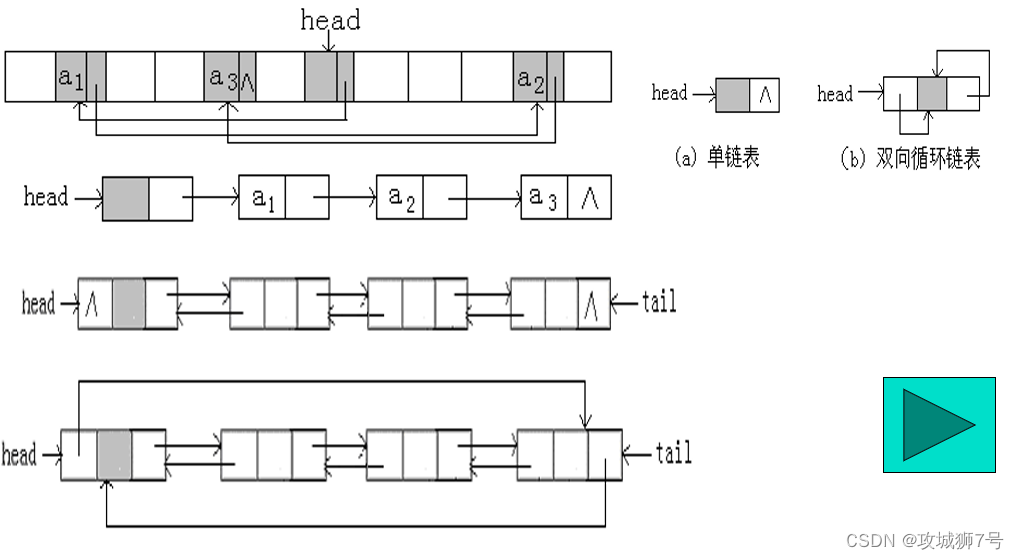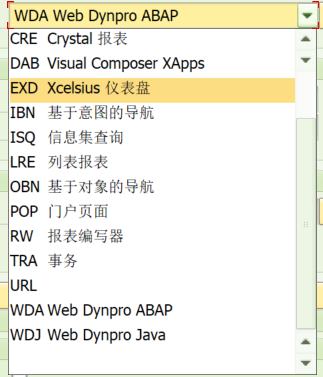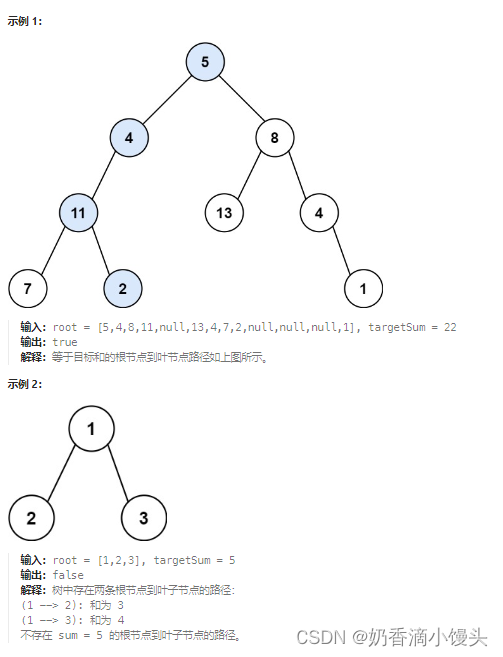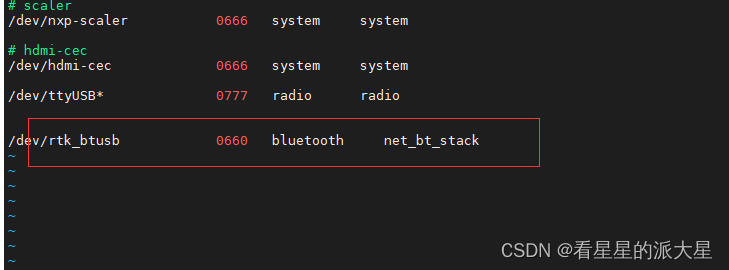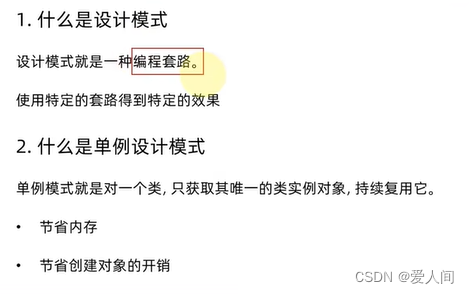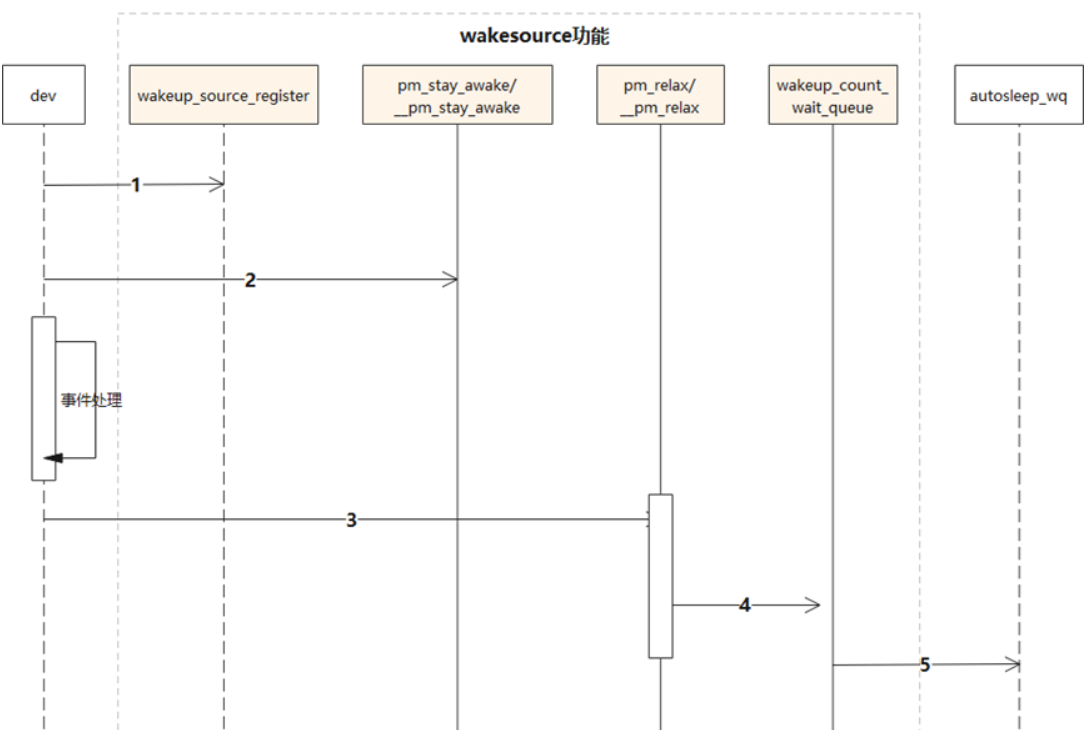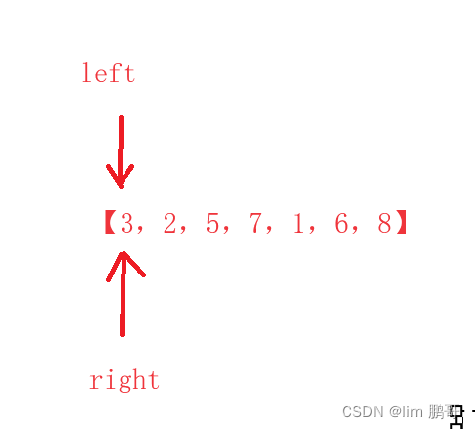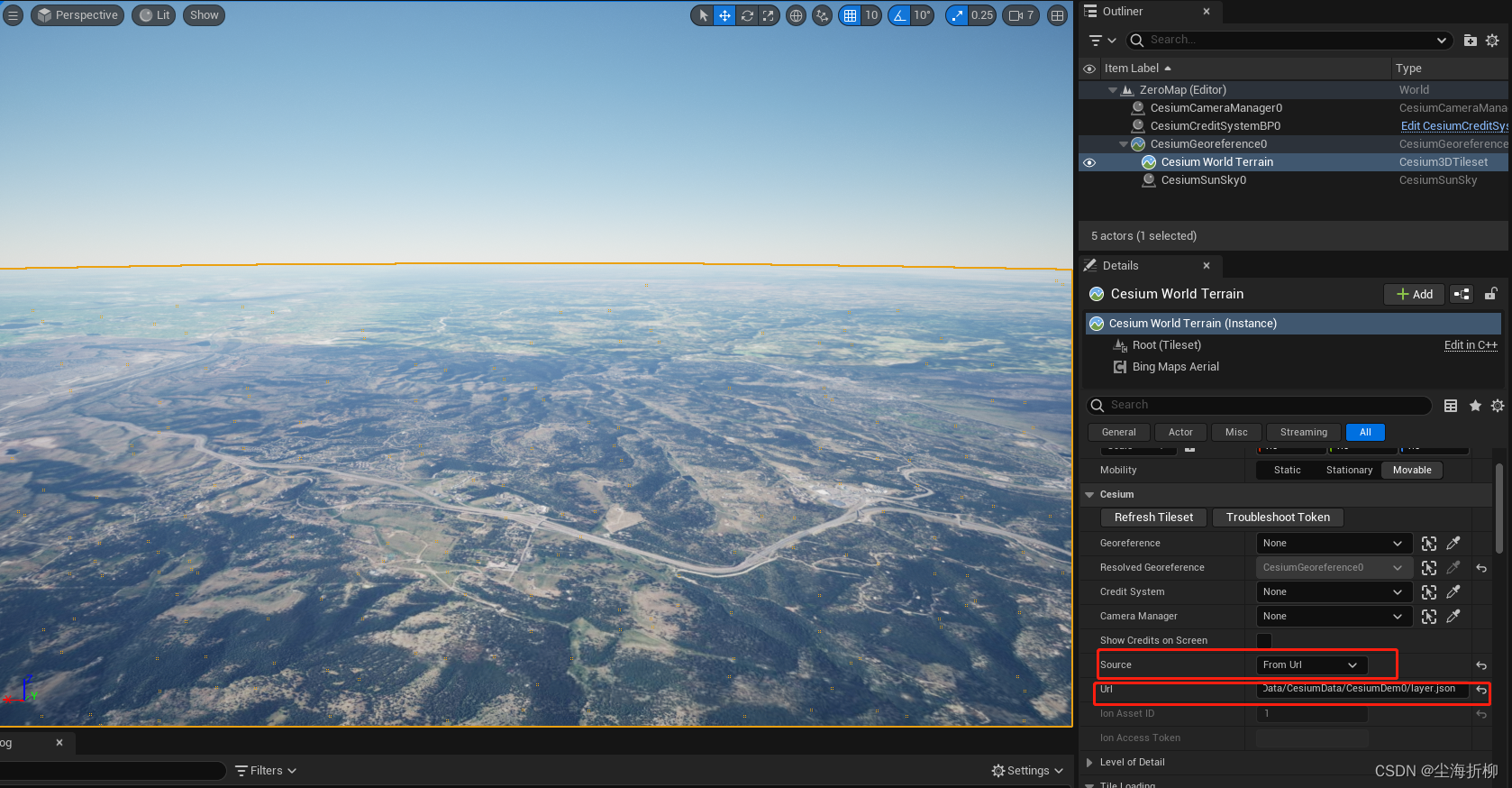文章目录
- RPN 整体代码
- RPN 具体实现过程
- 数据标注
- 读取标注数据
- 固定图片大小调整目标框
- 使用预训练模型获取 feature_shape
- 定义 RPN 网络
- 生成RPN 的 CLS 和 REG 数据集
- 获取所有的锚点
- 计算锚点与目标框的IOU
- 定义 RPN loss 和 训练过程
- 参考资料
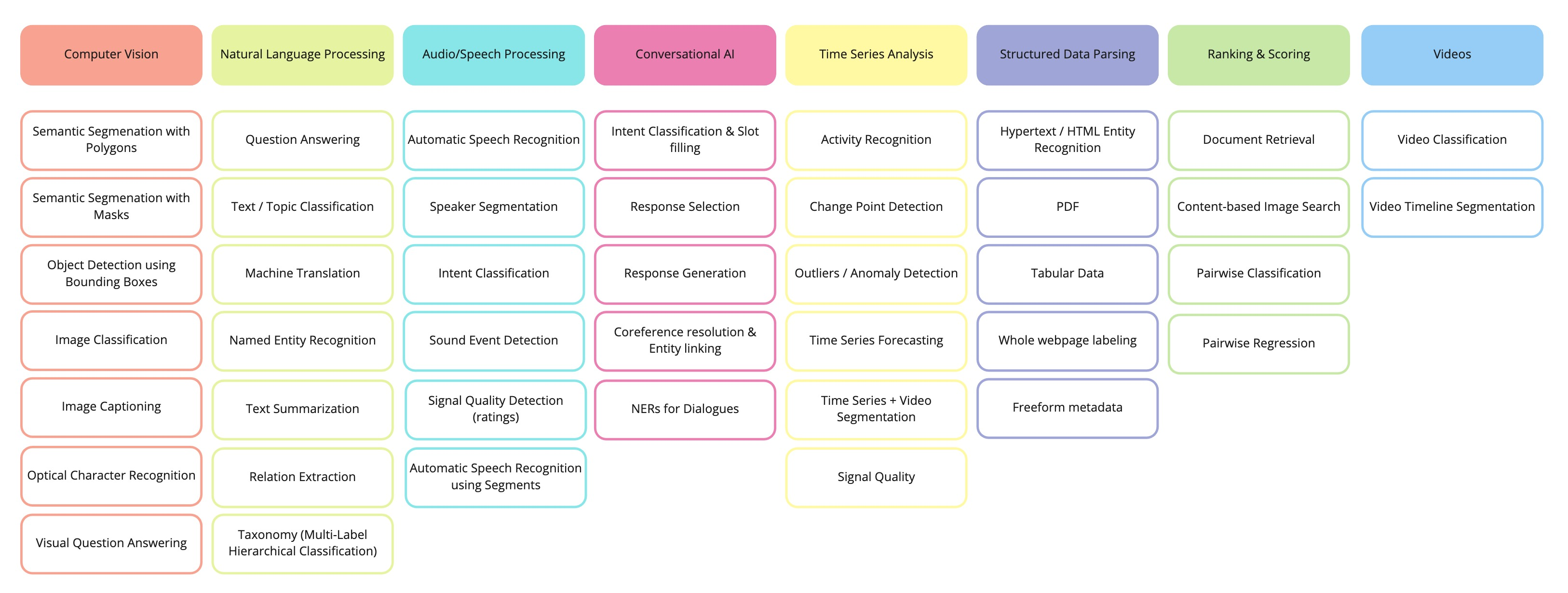
这里实现的是二阶段目标检测,其主要由一个RPN框架和ROI框架构成,后者只是一个图片分类任务,前者较为麻烦,这里只实现前者RPN过程
RPN 整体代码
import xml.etree.ElementTree as ET
import os
import pandas as pd
import tensorflow as tf
import numpy as np
from PIL import Image
import matplotlib.pyplot as pltdef generate_anchors(sizes = [128, 256, 512], ratios = [[1, 1], [1, 2], [2, 1]]):num_anchors = len(sizes) * len(ratios)anchors = np.zeros((num_anchors, 4))anchors[:, 2:] = np.tile(sizes, (2, len(ratios))).Tfor i in range(len(ratios)):anchors[3 * i: 3 * i + 3, 2] = anchors[3 * i: 3 * i + 3, 2] * ratios[i][0]anchors[3 * i: 3 * i + 3, 3] = anchors[3 * i: 3 * i + 3, 3] * ratios[i][1]anchors[:, 0::2] -= np.tile(anchors[:, 2] * 0.5, (2, 1)).Tanchors[:, 1::2] -= np.tile(anchors[:, 3] * 0.5, (2, 1)).Treturn anchorsdef shift(shape, anchors, stride=16):shift_x = (np.arange(0, shape[1], dtype=np.float32) + 0.5) * strideshift_y = (np.arange(0, shape[0], dtype=np.float32) + 0.5) * strideshift_x, shift_y = np.meshgrid(shift_x, shift_y)shift_x = np.reshape(shift_x, [-1])shift_y = np.reshape(shift_y, [-1])shifts = np.stack([shift_x, shift_y, shift_x, shift_y], axis=0)shifts = np.transpose(shifts)number_of_anchors = np.shape(anchors)[0]k = np.shape(shifts)[0]shifted_anchors = np.reshape(anchors, [1, number_of_anchors, 4]) + np.array(np.reshape(shifts, [k, 1, 4]), dtype=np.float32)shifted_anchors = np.reshape(shifted_anchors, [k * number_of_anchors, 4])return shifted_anchorsdef get_anchors(input_shape, feature_shape, sizes = [128, 256, 512], ratios = [[1, 1], [1, 2], [2, 1]], stride=16):anchors = generate_anchors(sizes = sizes, ratios = ratios)anchors = shift(feature_shape, anchors, stride = stride)anchors[:, ::2] = np.clip(anchors[:, ::2], 0, input_shape[1])anchors[:, 1::2] = np.clip(anchors[:, 1::2], 0, input_shape[0])return anchors%%time
anchors = get_anchors([600,600], [37,37])anchors## 数据准备def get_xml_box(file_path, return_object_name=False):"""返回的形式类似于:..[filename, object_name, xmin, ymin, xmax, ymax]"""tree = ET.parse(file_path)root = tree.getroot()filename = root.find('filename').textobject_name_list = []box_list = []for item in root.iter('object'):object_name = item.find('name').textbox = item.find('bndbox')xmin = box.find('xmin').textymin = box.find('ymin').textxmax = box.find('xmax').textymax = box.find('ymax').textobject_name_list.append(object_name)box_list.append([xmin, ymin, xmax, ymax])return [filename, object_name_list, box_list]xml_files = ['../data/VOC2007/Annotations/' + xml_file for xml_file in os.listdir('../data/VOC2007/Annotations/') if xml_file.endswith('xml')]
data = [get_xml_box(xml_file) for xml_file in xml_files]
df = pd.DataFrame(data)
df.columns = ['filename', 'object_name_list', 'box_list']
df['filename'] = '../data/VOC2007/JPEGImages/' + df['filename']df.head()class_name = set([item for items in df.object_name_list.values.tolist() for item in items])
class_nums = len(class_name) + 1
class_name2index = dict(zip(class_name, range(1, class_nums)))
class_index2name = dict(zip(range(1, class_nums), class_name))df['object_name_list'] = df['object_name_list'].map(lambda x: [class_name2index[item] for item in x])df.head()## 固定图片大小def get_final_image_and_box(filename, box, input_shape=[600, 600]):image = Image.open(filename)box = np.array(box).astype(np.float32)iw, ih = image.sizeh, w = input_shapescale = min(w/iw, h/ih)nw = int(iw*scale)nh = int(ih*scale)dx = (w-nw)//2dy = (h-nh)//2# 获取final_imageimage = image.resize((nw,nh), Image.BICUBIC)new_image = Image.new('RGB', (w,h), (128,128,128))new_image.paste(image, (dx, dy))image_data = np.array(new_image, np.float32)# 获取final_boxbox[:, [0,2]] = box[:, [0,2]]*nw/iw + dxbox[:, [1,3]] = box[:, [1,3]]*nh/ih + dybox[:, 0:2][box[:, 0:2]<0] = 0box[:, 2][box[:, 2]>w] = wbox[:, 3][box[:, 3]>h] = hbox_w = box[:, 2] - box[:, 0]box_h = box[:, 3] - box[:, 1]box = box[np.logical_and(box_w>1, box_h>1)]return image_data, boxfilename = '../data/VOC2007/JPEGImages/000001.jpg'
target_box = [[9, 16, 374, 430], [378, 86, 625, 447]]
input_shape = [600, 600]image_data, target_box = get_final_image_and_box(filename, target_box, input_shape)
image_data.shape, target_boxdef compute_iou(boxes0: np.ndarray, boxes1: np.ndarray):""" 计算多个边界框和多个边界框的交并比boxes0: `~np.ndarray` of shape `(A, 4)`boxes1: `~np.ndarray` of shape `(B, 4)`Returns iou: `~np.ndarray` of shape `(A, B)`"""boxes0 = np.array(boxes0)boxes1 = np.array(boxes1)A = boxes0.shape[0]B = boxes1.shape[0]xy_max = np.minimum(boxes0[:, np.newaxis, 2:].repeat(B, axis=1),np.broadcast_to(boxes1[:, 2:], (A, B, 2)))xy_min = np.maximum(boxes0[:, np.newaxis, :2].repeat(B, axis=1),np.broadcast_to(boxes1[:, :2], (A, B, 2)))# 计算交集面积inter = np.clip(xy_max-xy_min, a_min=0, a_max=np.inf)inter = inter[:, :, 0]*inter[:, :, 1]# 计算每个矩阵的面积area_0 = ((boxes0[:, 2]-boxes0[:, 0])*(boxes0[:, 3] - boxes0[:, 1]))[:, np.newaxis].repeat(B, axis=1)area_1 = ((boxes1[:, 2] - boxes1[:, 0])*(boxes1[:, 3] - boxes1[:, 1]))[np.newaxis, :].repeat(A, axis=0)return inter/(area_0+area_1-inter)def get_cls_and_reg_data(anchors, target_box, threshold_min=0.3, threshold_max=0.7, sample_size=256):positive_iou = compute_iou(anchors, target_box)>threshold_maxnegative_iou = compute_iou(anchors, target_box)<threshold_minpositive_cls = np.any(positive_iou, axis=1).astype(np.float32)negative_cls = np.all(negative_iou, axis=1).astype(np.float32)positive_index = np.random.choice(np.where(positive_cls==1)[0], size=sample_size)negative_index = np.random.choice(np.where(negative_cls==1)[0], size=sample_size)rpn_cls = np.concatenate([positive_index, negative_index], axis=0)rpn_reg = [np.where(positive_iou[:,ix]==True)[0].tolist() for ix in range(len(target_box))]return rpn_cls, rpn_regclass RPN(tf.keras.Model):def __init__(self, num_anchors):super(RPN, self).__init__()self.get_feature_model = tf.keras.applications.vgg16.VGG16(include_top=False, input_shape=[600, 600, 3])self.get_feature_model = tf.keras.models.Model(inputs=self.get_feature_model.input, outputs=self.get_feature_model.layers[-2].output)self.get_feature_model.trainable = Falseself.conv_base = tf.keras.layers.Conv2D(512, (3, 3), padding='same', activation='relu', name='rpn_conv1')self.conv_class = tf.keras.layers.Conv2D(num_anchors, (1, 1), activation='sigmoid', name='rpn_out_class')self.conv_regr = tf.keras.layers.Conv2D(num_anchors * 4, (1, 1), activation='linear', name='rpn_out_regress')self.flatten = tf.keras.layers.Flatten()def call(self, x):x = self.get_feature_model(x)x = self.conv_base(x)x_cls = self.flatten(self.conv_class(x))x_reg = tf.reshape(self.conv_regr(x), [tf.shape(x)[0], -1, 4])x_reg = tf.transpose(x_reg, perm=[0, 2, 1])return x_cls, x_regrpn = RPN(9)x = np.stack([image_data,image_data])
y = [[[9, 16, 374, 430], [378, 86, 625, 447]], [[9, 16, 374, 430], [378, 86, 625, 447]]]def compute_rpn_loss(x, y, return_cls=None, return_reg=None):x_cls, x_reg = rpn(x)y_true = tf.concat([tf.ones(256), tf.zeros(256)], axis=0)anchors = get_anchors([600,600], [37,37])cls_loss = 0reg_loss = 0for i in tf.range(tf.shape(x)[0]):try:rpn_cls, rpn_reg = get_cls_and_reg_data(anchors, y[i])y_pred = tf.gather(x_cls[i], rpn_cls, axis=-1)cls_loss += tf.keras.losses.binary_crossentropy(y_pred=y_pred, y_true=y_true)for ix, indexes in enumerate(rpn_reg):if indexes:da = tf.transpose(tf.gather(x_reg[i], indexes, axis=-1))g = [y[i][ix]]a = tf.gather(anchors, indexes)g = tf.cast(g, tf.float32)a = tf.cast(a, tf.float32)t_w = tf.math.log((g[:, 2] - g[:, 0]) / (a[:, 2] - a[:, 0]))t_h = tf.math.log((g[:, 3] - g[:, 1]) / (a[:, 3] - a[:, 1]))t_x = ((g[:, 0] + g[:, 2]) / 2 - (a[:, 0] + a[:, 2]) / 2) / (a[:, 2] - a[:, 0])t_y = ((g[:, 1] + g[:, 3]) / 2 - (a[:, 1] + a[:, 3]) / 2) / (a[:, 3] - a[:, 1])t = tf.stack([t_x, t_y, t_w, t_h], axis=1)reg_loss += tf.reduce_mean(tf.abs(da - t))except:passif return_cls:return cls_lossif return_reg:return reg_lossreturn cls_loss, reg_lossoptimizer = tf.keras.optimizers.Adam(learning_rate=1e-4)def train_one_step(x, y):with tf.GradientTape() as tape:reg_loss = compute_rpn_loss(x, y, return_reg=True)rpn.conv_class.trainable = Falserpn.conv_regr.trainable = Truegrads = tape.gradient(reg_loss, rpn.trainable_variables)optimizer.apply_gradients(grads_and_vars=zip(grads, rpn.trainable_variables))with tf.GradientTape() as tape:cls_loss = compute_rpn_loss(x, y, return_cls=True)rpn.conv_class.trainable = Truerpn.conv_regr.trainable = Falsegrads = tape.gradient(cls_loss, rpn.trainable_variables)optimizer.apply_gradients(grads_and_vars=zip(grads, rpn.trainable_variables))return cls_loss, reg_lossdef train_one_epoch(times, size=10, steps=10):cls_loss_total = []reg_loss_total = []for step in range(steps):data = df.sample(size)x_list = []y_list = []for filename, box in data[['filename', 'box_list']].values:box = list(np.array(box).astype(np.int32))img, box = get_final_image_and_box(filename, box)x_list.append(img)y_list.append(list(box))x_list = np.stack(x_list)y_list = [[list(item) for item in items] for items in y_list]cls_loss, reg_loss = train_one_step(x_list, y_list)cls_loss_total.append(cls_loss)reg_loss_total.append(reg_loss)cls_loss = tf.reduce_mean(cls_loss_total).numpy()reg_loss = tf.reduce_mean(reg_loss_total).numpy()tf.print(f'第{times}epochs, 得到cls_loss:{cls_loss}, reg_loss:{reg_loss}')for i in range(1, 30):train_one_epoch(times=i)def nms(boxes, scores, iou_threshold):"""boxes 是一个 [-1, 4], scores 是一个 [-1] """def compute_iou(boxes, box):# 计算交集boxes, box = tf.cast(boxes, dtype=tf.float32), tf.cast(box, dtype=tf.float32)xy_max = tf.minimum(boxes[:, 2:], box[2:])xy_min = tf.maximum(boxes[:, :2], box[:2])inter = tf.clip_by_value(xy_max - xy_min, clip_value_min=0., clip_value_max=tf.int32.max)inter = inter[:, 0]*inter[:, 1]# 计算面积area_boxes = (boxes[:, 2]-boxes[:, 0])*(boxes[:, 3]-boxes[:, 1])area_box = (box[2]-box[0])*(box[3]-box[1])return inter/(area_box+area_boxes-inter)boxes, scores = tf.cast(boxes, tf.float32), tf.cast(scores, tf.float32)nms_indices = tf.TensorArray(tf.int32, size=0, dynamic_size=True)def cond(boxes, scores, nms_indices):return tf.reduce_any(tf.not_equal(scores, 0))def body(boxes, scores, nms_indices):idx = tf.argsort(scores, direction='DESCENDING')scores = tf.gather(scores, idx)boxes = tf.gather(boxes, idx)current_box = tf.gather(boxes, idx[0])nms_indices = nms_indices.write(nms_indices.size(), idx[0])ious = compute_iou(boxes, current_box)mask = tf.math.less(ious, iou_threshold)scores = tf.cast(mask, tf.float32) * scoresreturn boxes, scores, nms_indices_, _, nms_indices = tf.while_loop(cond, body, [boxes, scores, nms_indices])final_indices = nms_indices.stack()final_boxes = tf.gather(boxes, final_indices)return final_boxesrpn(np.expand_dims(image_data, axis=0))[0]nms(tf.reshape(anchors, [-1,4]), tf.reshape(rpn(np.expand_dims(image_data, axis=0))[0], -1), 0.9)def bbox_to_rect(bbox, color):return plt.Rectangle(xy=(bbox[0], bbox[1]), width=bbox[2]-bbox[0], height=bbox[3]-bbox[1],fill=False, edgecolor=color, linewidth=0.5)# 一步到位
def plot_anchors(anchors):fig = plt.figure(figsize=(10, 10))# 获取范围,方便限制坐标轴a, b = np.min(anchors, axis=0), np.max(anchors, axis=0)plt.imshow(image_data.astype(np.int32))plt.scatter([a[0], b[2]], [a[1], b[3]], c='white')ax = plt.gca()for anchor in anchors:ax.add_patch(bbox_to_rect(anchor, 'red'))plt.axis('off')zz = nms(tf.reshape(anchors, [-1,4]), tf.reshape(rpn(np.expand_dims(image_data, axis=0))[0], -1), 0.9)plot_anchors(zz)
RPN 具体实现过程
数据标注

通常来说,像目标检测识别这种数据标注使用的工具是 LabelImg, 但是随着开源社区的发展和通用模型的成熟,较为推荐使用Label Studio,该工具几乎可以标注任何任务的数据,同时 LabelImg 集成于其中,不同点在于,LabelImg 像一个桌面应用程序,而 Label Studio 是一个端口网页,同时 Label Studio 类似于社区的形式,需要登入。
Label Studio 的安装方式如下:注意:最好在一个新的虚拟环境安装,避免于原来的库发生冲突;
# Requires Python >=3.8
pip install label-studio# Start the server at http://localhost:8080
label-studio
安装之后打开 http://localhost:8080 ,默认是这个,如果占用了基本上是+1就可以使用;

发现以上页面,点击 SIGN UP 进行注册,注册登入完毕后,得到以下界面,点击 Create Project
![![[Pasted image 20240529125046.png]]](https://img-blog.csdnimg.cn/direct/ae64751fe5084182a1173f241ef65f54.png)
把该填完的填写完毕,在 Data Import 中导入数据,在 Labeling Setup 中选取任务类型,最后点击 Save ,可以开始执行数据标注任务了。
![![[Pasted image 20240529125310.png]]](https://img-blog.csdnimg.cn/direct/3a989131563c4eb5ad0de3e9cc405d67.png)
标注页面如下
![![[Pasted image 20240529125525.png]]](https://img-blog.csdnimg.cn/direct/384b4d1b5b7445a1a643c2c3454437f5.png)
标注好数据后,对数据进行导出
![![[Pasted image 20240529125922.png]]](https://img-blog.csdnimg.cn/direct/799edeb33ba24d0f931261b43ccfc270.png)
所谓数据标注,也就是创造数据的过程,这里导出有不同的形式对应不同模型库的处理方法,在这里我们选择文章中一样的格式,Pascal VOC XML ,之后我们还需要把创造的数据进行转化制作数据集;
读取标注数据
Pascal VOC XML 数据集由两个文件夹构成,分别是 Annotations 和 images,前者存储标注数据,文件格式为 xml,后者对应 JPEGImages ,存储照片数据;
![![[Pasted image 20240529130200.png]]](https://img-blog.csdnimg.cn/direct/a0039cd2bab34dda9d5c0dc60168bdb2.png)
由于标注数据过于麻烦,这里直接采用 VOC2007 数据集进行训练,首先读取 Annotations 中的 xml 数据,xml 数据格式如下
<annotation><folder>VOC2007</folder><!--文件名--><filename>000005.jpg</filename>. <!--数据来源--><source><!--数据来源--><database>The VOC2007 Database</database><annotation>PASCAL VOC2007</annotation><!--来源是flickr,一个雅虎的图像分享网站,下面是id,对于我们没有用--><image>flickr</image><flickrid>325991873</flickrid></source><!--图片的所有者,也没有用--><owner><flickrid>archintent louisville</flickrid><name>?</name></owner><!--图像尺寸,宽、高、长--><size><width>500</width><height>375</height><depth>3</depth></size><!--是否用于分割,0表示用于,1表示不用于--><segmented>0</segmented><!--下面是图像中标注的物体,每一个object包含一个标准的物体--><object><!--物体名称,拍摄角度--><name>chair</name><pose>Rear</pose><!--是否被裁减,0表示完整,1表示不完整--><truncated>0</truncated><!--是否容易识别,0表示容易,1表示困难--><difficult>0</difficult><!--bounding box的四个坐标--><bndbox><xmin>263</xmin><ymin>211</ymin><xmax>324</xmax><ymax>339</ymax></bndbox></object>
</annotation>
所有导入的包如下
import xml.etree.ElementTree as ET
import os
import pandas as pd
import tensorflow as tf
import numpy as np
from PIL import Image
import matplotlib.pyplot as plt
我们只需要获取图片中所有对象的名称以及坐标,代码如下
def get_xml_box(file_path, return_object_name=False):"""返回的形式类似于:..[filename, object_name, xmin, ymin, xmax, ymax]"""tree = ET.parse(file_path)root = tree.getroot()filename = root.find('filename').textobject_name_list = []box_list = []for item in root.iter('object'):object_name = item.find('name').textbox = item.find('bndbox')xmin = box.find('xmin').textymin = box.find('ymin').textxmax = box.find('xmax').textymax = box.find('ymax').textobject_name_list.append(object_name)box_list.append([xmin, ymin, xmax, ymax])return [filename, object_name_list, box_list]
遍历 Annotations 文件夹,提取出 Annotations 信息
# 遍历 Annotations 文件夹
xml_files = ['../data/VOC2007/Annotations/' + xml_file for xml_file in os.listdir('../data/VOC2007/Annotations/') if xml_file.endswith('xml')]
data = [get_xml_box(xml_file) for xml_file in xml_files]
df = pd.DataFrame(data)
df.columns = ['filename', 'object_name_list', 'box_list']# 给filename 添加文件路径 得到file_path
df['filename'] = '../data/VOC2007/JPEGImages/' + df['filename']df.head()
获得表格如下
![![[Pasted image 20240531082732.png]]](https://img-blog.csdnimg.cn/direct/9001ec7034cc4f218da276b0ed82ae82.png)
接下来获取 object_name_list 中包含的所有类别并构建 name2index 和 index2name 两个字典,利用 name2index 字典对 object_name_list 进行转换
class_name = set([item for items in df.object_name_list.values.tolist() for item in items])
class_nums = len(class_name) + 1
class_name2index = dict(zip(class_name, range(1, class_nums)))
class_index2name = dict(zip(range(1, class_nums), class_name))df['object_name_list'] = df['object_name_list'].map(lambda x: [class_name2index[item] for item in x])df.head()
获取最终的表格如下
![![[Pasted image 20240531082932.png]]](https://img-blog.csdnimg.cn/direct/fd6987b60c8c44f6bb9ad35d28964661.png)
固定图片大小调整目标框
由于神经网络模型需要输入的图像大小一致,我们需要将大小不同的图片转化成大小相同的图片进行输入,由于图片发生了变化,目标框也会发生变化。这里以dataframe中第一个数据为例子,我们把图片大小固定为 600 × 600 600 \times 600 600×600;
def get_final_image_and_box(filename, box, input_shape=[600, 600]):image = Image.open(filename)box = np.array(box).astype(np.float32)iw, ih = image.sizeh, w = input_shapescale = min(w/iw, h/ih)nw = int(iw*scale)nh = int(ih*scale)dx = (w-nw)//2dy = (h-nh)//2# 获取final_imageimage = image.resize((nw,nh), Image.BICUBIC)new_image = Image.new('RGB', (w,h), (128,128,128))new_image.paste(image, (dx, dy))image_data = np.array(new_image, np.float32)# 获取final_boxbox[:, [0,2]] = box[:, [0,2]]*nw/iw + dxbox[:, [1,3]] = box[:, [1,3]]*nh/ih + dybox[:, 0:2][box[:, 0:2]<0] = 0box[:, 2][box[:, 2]>w] = wbox[:, 3][box[:, 3]>h] = hbox_w = box[:, 2] - box[:, 0]box_h = box[:, 3] - box[:, 1]box = box[np.logical_and(box_w>1, box_h>1)]return image_data, boxfilename = '../data/VOC2007/JPEGImages/000001.jpg'
target_box = [[9, 16, 374, 430], [378, 86, 625, 447]]
input_shape = [600, 600]image_data, target_box = get_final_image_and_box(filename, target_box, input_shape)
image_data.shape, target_box
使用预训练模型获取 feature_shape
这里使用 VGG16 模型来获取 feature_shape
get_feature_model = tf.keras.applications.vgg16.VGG16(include_top=False, input_shape=[600, 600, 3])
get_feature_model = tf.keras.models.Model(inputs=get_feature_model.input, outputs=get_feature_model.layers[-2].output)
测试一下特征模型输出
get_feature_model(np.expand_dims(image_data, axis=0)).shape
# TensorShape([1, 37, 37, 512])
可以得到 feature_shape 为 37 × 37 37 \times 37 37×37
定义 RPN 网络
RPN 网络是在预训练模型的基础上进行的,其有两个输出,一个是 classification、一个是regression,前者维度为 num_anchors, 后者维度为 4 * num_anchors,其中 num_anchors 等于 9,其中 9 表示下文中 generate_anchors 生成的 基础锚框个数 len(sizes) * len(ratios)
class RPN(tf.keras.Model):def __init__(self, num_anchors):super(RPN, self).__init__()self.get_feature_model = tf.keras.applications.vgg16.VGG16(include_top=False, input_shape=[600, 600, 3])self.get_feature_model = tf.keras.models.Model(inputs=self.get_feature_model.input, outputs=self.get_feature_model.layers[-2].output)self.get_feature_model.trainable = Falseself.conv_base = tf.keras.layers.Conv2D(512, (3, 3), padding='same', activation='relu', name='rpn_conv1')self.conv_class = tf.keras.layers.Conv2D(num_anchors, (1, 1), activation='sigmoid', name='rpn_out_class')self.conv_regr = tf.keras.layers.Conv2D(num_anchors * 4, (1, 1), activation='linear', name='rpn_out_regress')self.flatten = tf.keras.layers.Flatten()def call(self, x):x = self.get_feature_model(x)x = self.conv_base(x)x_cls = self.flatten(self.conv_class(x))x_reg = tf.reshape(self.conv_regr(x), [tf.shape(x)[0], -1, 4])x_reg = tf.transpose(x_reg, perm=[0, 2, 1])return x_cls, x_regrpn = RPN(9)
生成RPN 的 CLS 和 REG 数据集
获取所有的锚点
def generate_anchors(sizes = [128, 256, 512], ratios = [[1, 1], [1, 2], [2, 1]]):num_anchors = len(sizes) * len(ratios)anchors = np.zeros((num_anchors, 4))anchors[:, 2:] = np.tile(sizes, (2, len(ratios))).Tfor i in range(len(ratios)):anchors[3 * i: 3 * i + 3, 2] = anchors[3 * i: 3 * i + 3, 2] * ratios[i][0]anchors[3 * i: 3 * i + 3, 3] = anchors[3 * i: 3 * i + 3, 3] * ratios[i][1]anchors[:, 0::2] -= np.tile(anchors[:, 2] * 0.5, (2, 1)).Tanchors[:, 1::2] -= np.tile(anchors[:, 3] * 0.5, (2, 1)).Treturn anchorsdef shift(shape, anchors, stride=16):shift_x = (np.arange(0, shape[1], dtype=np.float32) + 0.5) * strideshift_y = (np.arange(0, shape[0], dtype=np.float32) + 0.5) * strideshift_x, shift_y = np.meshgrid(shift_x, shift_y)shift_x = np.reshape(shift_x, [-1])shift_y = np.reshape(shift_y, [-1])shifts = np.stack([shift_x, shift_y, shift_x, shift_y], axis=0)shifts = np.transpose(shifts)number_of_anchors = np.shape(anchors)[0]k = np.shape(shifts)[0]shifted_anchors = np.reshape(anchors, [1, number_of_anchors, 4]) + np.array(np.reshape(shifts, [k, 1, 4]), dtype=np.float32)shifted_anchors = np.reshape(shifted_anchors, [k * number_of_anchors, 4])return shifted_anchorsdef get_anchors(input_shape, feature_shape, sizes = [128, 256, 512], ratios = [[1, 1], [1, 2], [2, 1]], stride=16):anchors = generate_anchors(sizes = sizes, ratios = ratios)anchors = shift(feature_shape, anchors, stride = stride)anchors[:, ::2] = np.clip(anchors[:, ::2], 0, input_shape[1])anchors[:, 1::2] = np.clip(anchors[:, 1::2], 0, input_shape[0])return anchorsinput_shape = [600, 600]
feature_shape = [37,37]
# 获取瞄框
anchors = get_anchors(input_shape, feature_shape)
# CPU times: total: 0 ns
# Wall time: 607 µs
计算锚点与目标框的IOU
def compute_iou(boxes0: np.ndarray, boxes1: np.ndarray):""" 计算多个边界框和多个边界框的交并比boxes0: `~np.ndarray` of shape `(A, 4)`boxes1: `~np.ndarray` of shape `(B, 4)`Returns iou: `~np.ndarray` of shape `(A, B)`"""boxes0 = np.array(boxes0)boxes1 = np.array(boxes1)A = boxes0.shape[0]B = boxes1.shape[0]xy_max = np.minimum(boxes0[:, np.newaxis, 2:].repeat(B, axis=1),np.broadcast_to(boxes1[:, 2:], (A, B, 2)))xy_min = np.maximum(boxes0[:, np.newaxis, :2].repeat(B, axis=1),np.broadcast_to(boxes1[:, :2], (A, B, 2)))# 计算交集面积inter = np.clip(xy_max-xy_min, a_min=0, a_max=np.inf)inter = inter[:, :, 0]*inter[:, :, 1]# 计算每个矩阵的面积area_0 = ((boxes0[:, 2]-boxes0[:, 0])*(boxes0[:, 3] - boxes0[:, 1]))[:, np.newaxis].repeat(B, axis=1)area_1 = ((boxes1[:, 2] - boxes1[:, 0])*(boxes1[:, 3] - boxes1[:, 1]))[np.newaxis, :].repeat(A, axis=0)return inter/(area_0+area_1-inter)
生成 CLS 和 REG 任务的数据
def get_cls_and_reg_data(anchors, target_box, threshold_min=0.3, threshold_max=0.7, sample_size=256):positive_iou = compute_iou(anchors, target_box)>threshold_maxnegative_iou = compute_iou(anchors, target_box)<threshold_minpositive_cls = np.any(positive_iou, axis=1).astype(np.float32)negative_cls = np.all(negative_iou, axis=1).astype(np.float32)positive_index = np.random.choice(np.where(positive_cls==1)[0], size=sample_size)negative_index = np.random.choice(np.where(negative_cls==1)[0], size=sample_size)rpn_cls = np.concatenate([positive_index, negative_index], axis=0)rpn_reg = [np.where(positive_iou[:,ix]==True)[0].tolist() for ix in range(len(target_box))]return rpn_cls, rpn_reg# CPU times: total: 0 ns
# Wall time: 4.26 ms
定义 RPN loss 和 训练过程
def compute_rpn_loss(x, y, return_cls=None, return_reg=None):x_cls, x_reg = rpn(x)y_true = tf.concat([tf.ones(256), tf.zeros(256)], axis=0)anchors = get_anchors([600,600], [37,37])cls_loss = 0reg_loss = 0for i in tf.range(tf.shape(x)[0]):try:rpn_cls, rpn_reg = get_cls_and_reg_data(anchors, y[i])y_pred = tf.gather(x_cls[i], rpn_cls, axis=-1)cls_loss += tf.keras.losses.binary_crossentropy(y_pred=y_pred, y_true=y_true)for ix, indexes in enumerate(rpn_reg):if indexes:da = tf.transpose(tf.gather(x_reg[i], indexes, axis=-1))g = [y[i][ix]]a = tf.gather(anchors, indexes)g = tf.cast(g, tf.float32)a = tf.cast(a, tf.float32)t_w = tf.math.log((g[:, 2] - g[:, 0]) / (a[:, 2] - a[:, 0]))t_h = tf.math.log((g[:, 3] - g[:, 1]) / (a[:, 3] - a[:, 1]))t_x = ((g[:, 0] + g[:, 2]) / 2 - (a[:, 0] + a[:, 2]) / 2) / (a[:, 2] - a[:, 0])t_y = ((g[:, 1] + g[:, 3]) / 2 - (a[:, 1] + a[:, 3]) / 2) / (a[:, 3] - a[:, 1])t = tf.stack([t_x, t_y, t_w, t_h], axis=1)reg_loss += tf.reduce_mean(tf.abs(da - t))except:passif return_cls:return cls_lossif return_reg:return reg_lossreturn cls_loss, reg_loss
定义训练 train_one_step 和 train_one_epoch
optimizer = tf.keras.optimizers.Adam(learning_rate=1e-4)def train_one_step(x, y):with tf.GradientTape() as tape:reg_loss = compute_rpn_loss(x, y, return_reg=True)rpn.conv_class.trainable = Falserpn.conv_regr.trainable = Truegrads = tape.gradient(reg_loss, rpn.trainable_variables)optimizer.apply_gradients(grads_and_vars=zip(grads, rpn.trainable_variables))with tf.GradientTape() as tape:cls_loss = compute_rpn_loss(x, y, return_cls=True)rpn.conv_class.trainable = Truerpn.conv_regr.trainable = Falsegrads = tape.gradient(cls_loss, rpn.trainable_variables)optimizer.apply_gradients(grads_and_vars=zip(grads, rpn.trainable_variables))return cls_loss, reg_lossdef train_one_epoch(times, size=10, steps=10):cls_loss_total = []reg_loss_total = []for step in range(steps):data = df.sample(size)x_list = []y_list = []for filename, box in data[['filename', 'box_list']].values:box = list(np.array(box).astype(np.int32))img, box = get_final_image_and_box(filename, box)x_list.append(img)y_list.append(list(box))x_list = np.stack(x_list)y_list = [[list(item) for item in items] for items in y_list]cls_loss, reg_loss = train_one_step(x_list, y_list)cls_loss_total.append(cls_loss)reg_loss_total.append(reg_loss)cls_loss = tf.reduce_mean(cls_loss_total).numpy()reg_loss = tf.reduce_mean(reg_loss_total).numpy()tf.print(f'第{times}epochs, 得到cls_loss:{cls_loss}, reg_loss:{reg_loss}')
在训练了30个epoch后效果如下
for i in range(1, 30):train_one_epoch(times=i)
训练过程损失变化
第1epochs, 得到cls_loss:7.311850547790527, reg_loss:37.811378479003906
第2epochs, 得到cls_loss:8.812080383300781, reg_loss:39.66188430786133
第3epochs, 得到cls_loss:7.56036376953125, reg_loss:38.44755172729492
第4epochs, 得到cls_loss:6.361146450042725, reg_loss:38.41288375854492
第5epochs, 得到cls_loss:4.806685924530029, reg_loss:34.26782989501953
第6epochs, 得到cls_loss:5.582345008850098, reg_loss:32.031654357910156
第7epochs, 得到cls_loss:4.612250328063965, reg_loss:26.891027450561523
第8epochs, 得到cls_loss:5.257579326629639, reg_loss:26.739116668701172
第9epochs, 得到cls_loss:4.4021315574646, reg_loss:26.248144149780273
第10epochs, 得到cls_loss:4.2677903175354, reg_loss:25.118724822998047
第11epochs, 得到cls_loss:4.390046119689941, reg_loss:20.355392456054688
第12epochs, 得到cls_loss:4.0723371505737305, reg_loss:18.319538116455078
第13epochs, 得到cls_loss:3.915370225906372, reg_loss:16.594970703125
第14epochs, 得到cls_loss:3.9558539390563965, reg_loss:18.293819427490234
第15epochs, 得到cls_loss:3.6445891857147217, reg_loss:14.1051607131958
第16epochs, 得到cls_loss:3.8050498962402344, reg_loss:15.811358451843262
第17epochs, 得到cls_loss:4.375217437744141, reg_loss:15.368804931640625
第18epochs, 得到cls_loss:3.943711757659912, reg_loss:10.533037185668945
第19epochs, 得到cls_loss:3.752122402191162, reg_loss:12.843942642211914
第20epochs, 得到cls_loss:3.458630323410034, reg_loss:10.283559799194336
第21epochs, 得到cls_loss:3.7187225818634033, reg_loss:11.331975936889648
第22epochs, 得到cls_loss:3.6269428730010986, reg_loss:12.088125228881836
第23epochs, 得到cls_loss:3.8386969566345215, reg_loss:10.8582124710083
第24epochs, 得到cls_loss:3.748070478439331, reg_loss:9.630635261535645
第25epochs, 得到cls_loss:4.043728828430176, reg_loss:8.781991958618164
第26epochs, 得到cls_loss:3.3101487159729004, reg_loss:7.175162315368652
第27epochs, 得到cls_loss:3.6511452198028564, reg_loss:6.6876630783081055
第28epochs, 得到cls_loss:4.238692283630371, reg_loss:7.911011695861816
第29epochs, 得到cls_loss:3.6738617420196533, reg_loss:6.6059465408325195
使用 NMS 在猫狗图片效果如下
def nms(boxes, scores, iou_threshold):"""boxes 是一个 [-1, 4], scores 是一个 [-1] """def compute_iou(boxes, box):# 计算交集boxes, box = tf.cast(boxes, dtype=tf.float32), tf.cast(box, dtype=tf.float32)xy_max = tf.minimum(boxes[:, 2:], box[2:])xy_min = tf.maximum(boxes[:, :2], box[:2])inter = tf.clip_by_value(xy_max - xy_min, clip_value_min=0., clip_value_max=tf.int32.max)inter = inter[:, 0]*inter[:, 1]# 计算面积area_boxes = (boxes[:, 2]-boxes[:, 0])*(boxes[:, 3]-boxes[:, 1])area_box = (box[2]-box[0])*(box[3]-box[1])return inter/(area_box+area_boxes-inter)boxes, scores = tf.cast(boxes, tf.float32), tf.cast(scores, tf.float32)nms_indices = tf.TensorArray(tf.int32, size=0, dynamic_size=True)def cond(boxes, scores, nms_indices):return tf.reduce_any(tf.not_equal(scores, 0))def body(boxes, scores, nms_indices):idx = tf.argsort(scores, direction='DESCENDING')scores = tf.gather(scores, idx)boxes = tf.gather(boxes, idx)current_box = tf.gather(boxes, idx[0])nms_indices = nms_indices.write(nms_indices.size(), idx[0])ious = compute_iou(boxes, current_box)mask = tf.math.less(ious, iou_threshold)scores = tf.cast(mask, tf.float32) * scoresreturn boxes, scores, nms_indices_, _, nms_indices = tf.while_loop(cond, body, [boxes, scores, nms_indices])final_indices = nms_indices.stack()final_boxes = tf.gather(boxes, final_indices)return final_boxes
效果如下
![![[Pasted image 20240531222535.png]]](https://img-blog.csdnimg.cn/direct/d5c2b546134e41feb19973602d2247a7.png)
这里并没有加入边框回归的效果,可以看到这里效果还不错,这是RPN过程,后面的ROI过程和RPN过程一致,单纯一个图片分类问题,这里就不进行实现了
参考资料
- 【数据准备001】标注工具Labelimg安装与使用(附txt与xml文件相互转化代码)-CSDN博客
- 标注工具——Label Studio安装与简单使用-CSDN博客
- 如何使用 numpy 和 pytorch 快速计算 IOU - 之一Yo - 博客园 (cnblogs.com)
- Python深度学习基于Tensorflow(10)目标检测_tensorflow 检测 定位-CSDN博客


